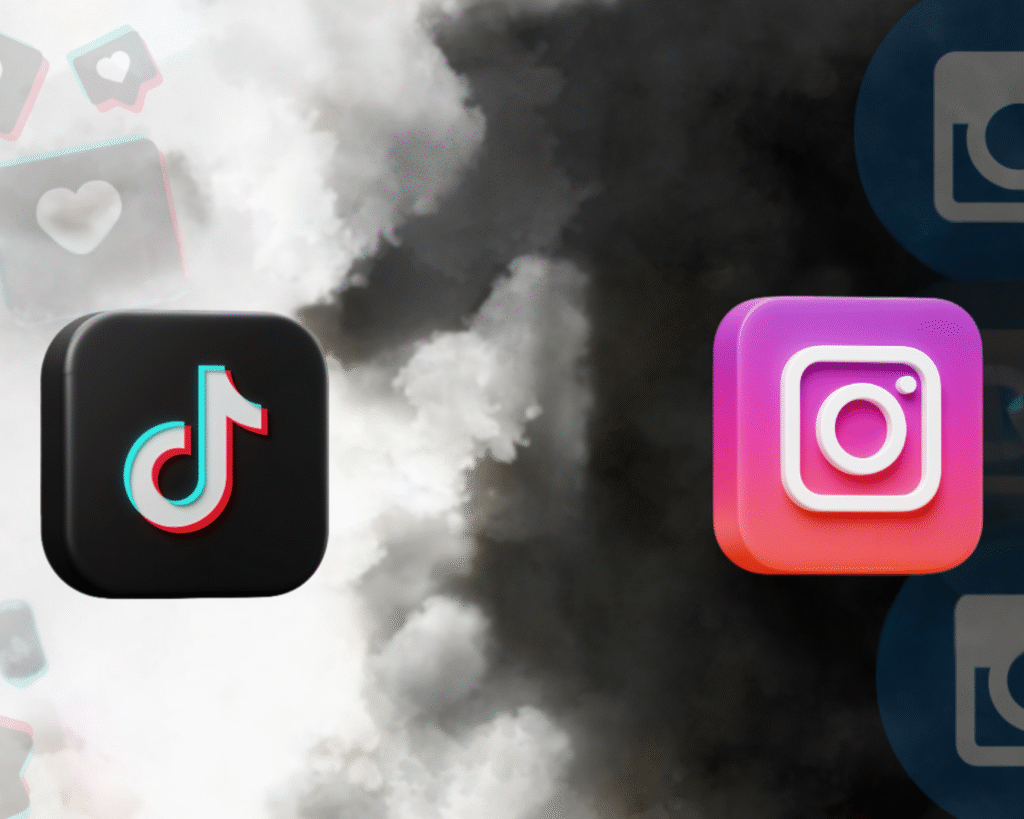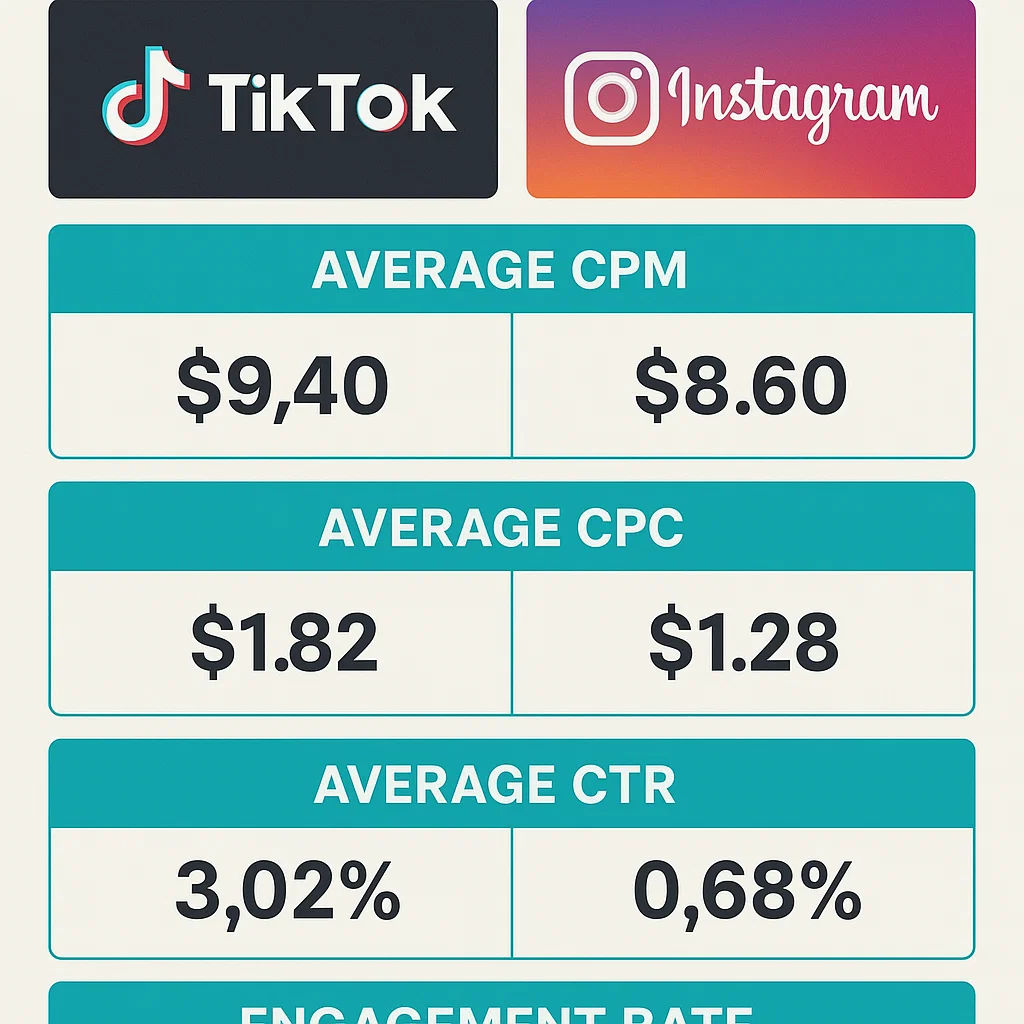
TikTok Shop vs. Instagram Shopping is a hot topic for small businesses right now. It’s wild to think that not long ago, TikTok was just a platform for lip-syncs and viral dances. Fast forward to 2025, and it’s now one of the most powerful ecommerce tools available to small businesses. But Instagram isn’t sitting quietly either—it’s evolved from a visual diary into a polished shopping destination with in-app checkout, creator tools, and ad integrations.
If you’re stuck trying to decide between Instagram Shopping and TikTok Shop, you’re not alone. Both platforms are doubling down on social commerce, and each brings a unique set of strengths (and weaknesses) to the table. In this guide, we’ll break down the features, performance, and ROI of both so you can figure out which one deserves more of your energy this year.
Social Commerce is Booming—But Where Should You Sell?
Social commerce isn’t just a trend in 2025—it’s the way people shop. Consumers are no longer hopping between apps to browse, research, and buy. A 2025 Shopify report on social commerce highlights that over 50% of Gen Z and millennial shoppers now prefer to complete purchases directly within social platforms. They’re watching a TikTok video, tapping a link, and checking out in seconds. Or they’re scrolling Instagram, seeing a tagged product, and adding it to the cart without ever leaving the platform.
That seamless experience is a goldmine for small businesses, but it also raises a big decision: should you focus your efforts on TikTok Shop, with its viral momentum and creator-friendly tools? Or stick with the reliability of Instagram Shopping, where visual branding and product discovery have long reigned supreme?
The truth is, both platforms offer serious potential—but in very different ways. TikTok thrives on spontaneity, entertainment, and trends, while Instagram favors polished storytelling and visual consistency. Understanding these differences is key if you want to maximise your ROI in 2025.
So let’s break it down—starting with what each platform brings to the ecommerce table, how their tools compare, and which one aligns best with your brand and goals.
TikTok Shop: Strengths, Weaknesses, and Growth Potential

TikTok Shop is quickly becoming a sales powerhouse. Unlike traditional ecommerce, TikTok blends entertainment and selling into one seamless experience. Shoppable videos, live streams, and native checkout keep users engaged while reducing friction.
Strengths:
- Massive organic reach potential through the For You Page (FYP)
- TikTok Live Shopping is ideal for flash sales or product demos
- Integration with creator content feels native, not forced
- TikTok Shop’s affiliate program lets creators promote your products directly
Weaknesses:
- Less mature than Instagram Shopping—expect more glitches and learning curves
- Limited product discovery unless content goes viral
- Less emphasis on curated brand aesthetics or storefronts
The virality potential is undeniably high, but sustainable growth on TikTok often means investing in content quantity, not just quality.
If you’re new to TikTok Shop, check out our guide on How to Set Up and Succeed with TikTok Shop in 2025 for a full walkthrough.
Instagram Shopping: What Still Works and What’s Changed

Instagram has been refining its e-commerce tools for longer, and it shows. Brands can tag products in posts, reels, and Stories. Plus, with Instagram Checkout, shoppers never have to leave the app to buy.
Strengths:
- More polished shopping interface and storefront setup
- Stronger tools for branded content partnerships
- Easier to build long-term customer trust through aesthetic consistency
- Shopping tags are seamlessly embedded into content
Weaknesses:
- Organic reach has declined unless you pay to play
- Less content discovery unless users are already following you
- Shopping feels more like an “add-on” than the main experience
Instagram is great for lifestyle-focused products where visual appeal, UGC, and branding matter most. However, without an ad budget or existing following, it’s harder to grow fast.
ROI Comparison: Ads, Engagement, and Sales Performance

Let’s talk numbers. When it comes to the ROI of TikTok Shop vs. Instagram Shopping, the playing field depends on your goals:
| Metric | TikTok Shop | Instagram Shopping |
|---|---|---|
| Organic Reach | High (via FYP & trends) | Steadily over time, more loyal followers |
| Engagement | Higher per view, faster spike | Steady over time, more loyal followers |
| Conversion Rate | Moderate (depends on live/demo strategy) | High (especially with Checkout enabled) |
| Ad Cost Efficiency | Lower CPCs, more experimental | Higher CPCs, but more targeted |
| Influencer ROI | Strong for viral creators & affiliate links | Strong for curated, niche communities |
If you’re looking for fast traction, TikTok Shop may bring better short-term ROI. TikTok’s algorithm is still one of the most generous when it comes to organic reach, with brands often going viral without a big budget. A recent case study by Influencer Marketing Hub showed how a small accessories brand saw a 470% increase in monthly sales after optimizing for TikTok Shop.
For sustained brand building and high-value purchases, Instagram still performs reliably, especially if you’re targeting Millennials or an older Gen Z audience.
Which Platform is Best for Your Brand Type?
Not all brands are built for TikTok virality. Not all products shine in a curated grid. Here’s how to decide:
| Brand Type | Best Fit |
|---|---|
| Impulse buys | TikTok Shop |
| Beauty & lifestyle | Instagram Shopping |
| Handmade or unique | TikTok for storytelling |
| Home décor & fashion | Instagram’s aesthetic appeal |
| Low-cost accessories | TikTok (viral-ready) |
| Higher-ticket items | Instagram (trust factor) |
You’ll also want to consider how each platform fits into your content strategy. TikTok demands quick, casual, high-volume content. Instagram favors polished visuals and longer-term engagement.
For more insight into platform-focused strategies, don’t miss our post on Social Media Management in 2025: Strategies That Actually Grow Your Brand.
Final Verdict and Tips for Cross-Platform Success
So—TikTok Shop vs Instagram Shopping—which one is the winner? The truth is, it depends on your niche, goals, and team bandwidth. Here’s a quick cheat sheet:
- Choose TikTok Shop if: You want rapid discovery, have a camera-ready product, and are open to fast-paced content creation.
- Choose Instagram Shopping if: You rely on visual branding, long-term customer relationships, and want to leverage influencer partnerships.
Best Tip? Combine both. Use TikTok to generate awareness and direct viewers to your Instagram Shop for checkout and nurturing.

